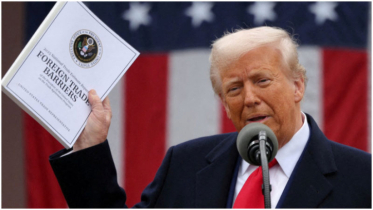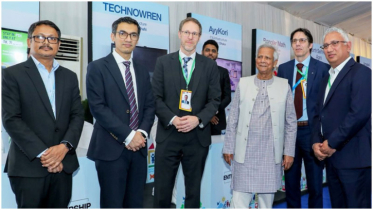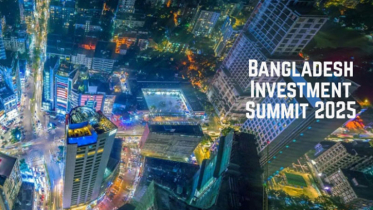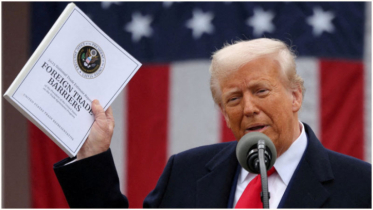Why is Japan edging closer to Bangladesh and India?
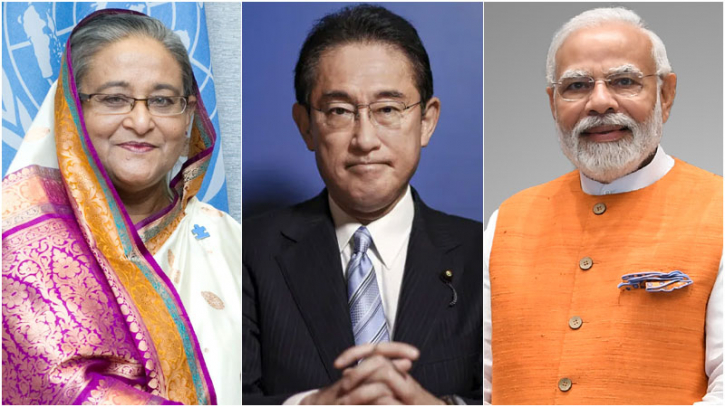
Japan has been on friendly terms with countries in South Asia. For some time now, it has invested in developmental infrastructure in South Asia — in northeastern India and Bangladesh in particular. China has entered this fray (especially in Bangladesh), and gained a firm foot in the door. Fumiko Yamada examines Japan’s ‘Free and Open Indo-Pacific’ policy, and how it is building trust and confidence in Bangladesh and India by putting them in a wider Indo-Pacific frame.
Bangladesh, Japan and India held a conclave in Agartala (Tripura, India) on 11-12 April to put in place connectivity initiatives to harness the commercial potential of the region. Asian Confluence, a think-tank in Shillong (in northeastern India), in collaboration with the Ministry of External Affairs, Government of India, organised the event, attended by Deputy Foreign Ministers of Bangladesh and India along with the Chief Minister of Tripura, the Japanese envoy to India, and others.
An earlier study by Asian Confluence suggested both Northeast India and Bangladesh need to scale up their multi-modal connectivity, which would not only help the region to raise its competitiveness but also narrow long-standing regional development gaps. The study suggested that both should work together to bring synergy in trade facilitation, and build express corridors for the trans-shipment and transit of goods from northeastern India to Chattogram (Chittagong) Port in southern Bangladesh. Of particular benefit would be the creation of industrial value chains, for a win-win situation for all stakeholders in Indian, Bangladeshi and Japanese companies in the region, the study added.
Another suggestion was to establish the Japan-Northeast India Chamber of Commerce to promote Japanese investment in northeastern India, along with a Northeast India–Bangladesh–Japan CEO Forum, which would provide the required business leadership.
Bangladesh is an important country in the Indo-Pacific region. It is also a country in which Japan is investing separately, in a big way. The government in Tokyo is involved in many projects in the country, including the deep-sea port at Matarbari (in coastal Bangladesh), which will connect the landlocked region with the Bay of Bengal. Matarbari is, in fact, part of Tokyo’s larger infrastructure development efforts in the Bay of Bengal and Northeast India with a focus on ‘multilayer connectivity’, as laid out in the plan.
Japan and Bangladesh have had close ties ever since Tokyo recognised the People’s Republic of Bangladesh as a sovereign country, soon after the new country declared its independence from (former) West Pakistan.
Japan has made significant investments in Northeast India as well, a region that has historically seen less development than other parts of India, yet a strategic region because it is close to, and bordering, Bhutan, China, Myanmar and Bangladesh on different sides.
All these factors have played a role in designing one of the signature initiatives of Japanese foreign policy, the ‘Free and Open Indo-Pacific’ (FOIP) vision. Conceived by former Prime Minister (and recently deceased) Shinzo Abe, it has been continued by successive administrations since then. As part of FOIP, Japan has been working to ensure that a rules-based order is maintained in the Indo-Pacific region.
In June 2018, the Japan International Cooperation Agency (JICA) signed loan agreements of JP¥2.65 billion (approx. US$19.65 million) with the Government of the People’s Republic of Bangladesh to provide for the development of Matarbari Port. Tokyo is also involved in the Dhaka Mass Rapid Transport Network as part of its development assistance to the country.
While unveiling his ‘new’ FOIP policy, Prime Minister Fumio Kishida of Japan said recently that ‘Northeast India, surrounded by land, still has unexploited economic potential’; FOIP includes integrated development of Northeast India and Bangladesh as part of a broader Bay of Bengal community.
Viewing Bangladesh and other areas of the South as a single economic zone, Japan plans to build a Bengal–Northeast India industrial value chain in cooperation with India and Bangladesh to foster growth in the region.
In addition, Japan and India have already formed an ‘Act East’ forum to take up projects in Bangladesh and other countries. Visiting India, and following a meeting with Indian Prime Minister Narendra Modi, Prime Minister Kishida elaborated on Japan’s FOIP policy at a speech at the Indian Council of World Affairs (ICWA) in New Delhi. He said that Japan was working with India to bring stability in South Asia, and had already formed a study group with Bangladesh to forge an economic partnership as Bangladesh graduates from being a ‘least developed’ country to a ‘developing’ nation. Significantly, he added that ‘The waters that connect Japan and the Pacific Island countries have no borders. The Pacific Islands region is exposed to many challenges such as rising sea levels due to climate change, infectious diseases such as Covid-19, and natural disasters such as volcanic eruptions.’
Calling India an ‘indispensable partner’, Kishida listed three important regions — Southeast Asia, South Asia and the Pacific Islands — where multi-layered connectivity could overcome vulnerabilities and boost economic growth. Prime Minister Kishida’s FOIP vision focused particularly on emerging economies and developing countries in the Indo-Pacific region, including far-flung island territories vulnerable to climate change and natural disasters in the Pacific.
Elaborating on the idea of cooperation, PM Kishida said: ‘In a post-Covid-19 world, digital connectivity is also increasingly vital. We will promote reliable digital technology including Open RAN, and develop information infrastructure including submarine cable-laying projects. We will also cooperate in the materialisation of smart cities utilising digital technology. We believe that there is a great potential to utilise Japanese technology and India’s strength in the IT field, as well as to provide support for infrastructure development through Japanese ODA.’
Briefing a small media group, Noriyuki Shikata, Cabinet Secretary for Public Affairs said that right now Northeast India and Bangladesh were on Tokyo’s radar. Myanmar will reappear in the frame once the political situation in Naypyidaw eases. Shikata pointed out that landlocked Bhutan could also be included in the broader Bay of Bengal initiative, though the focus right now was on the Northeast India-Bangladesh connect.
To fulfill Kishida’s vision of transparent and inclusive development of the region, Tokyo will mobilise US$75 billion in public and private funds in the Indo-Pacific region by 2030.
Against this backdrop, and although Japan has been one of the closest development partners of Bangladesh since its birth, it is important to note that more recently it has been outsmarted by China, particularly after the launch of Beijing’s Belt and Road Initiative (BRI), of which Bangladesh is a signatory. .
With China’s engagement diplomacy as the subtext, Japan will focus on fair development finance on building quality infrastructure development, including undersea cables to far-flung island territories.
Kishida, in his speech in New Delhi mentioned earlier, also cited the critical situation in Sri Lanka and insisted on rules to prevent ‘opaque and unfair development finance’ which are necessary for nations to grow autonomously and sustainably. ‘It is essential that Sri Lanka’s debt restructuring advances in a fair and transparent manner’, the Japanese premier observed — an indirect reference to China’s aggressive investments in Sri Lanka, and the related economic collapse of Sri Lanka’s economy.
Analysts point out that Japan appears to be exploring deeper cooperation with India in South Asia as a major step, to later use the engagement with New Delhi to pave the way to other geographies, including the Middle East and Africa. ‘I believe that Japan and India are in an extremely unique position in the current international relations and, furthermore, in the history of the world’, said the Japanese PM in his speech at the ICWA in New Delhi.
Kishida chose India to make the significant announcement as it was here that Japan’s longest-serving Prime Minister, the late Shinzo Abe, delivered his famous ‘The Confluence of Two Seas’ speech to the Indian Parliament in August 2007, and came up with the concept of the ‘Indo-Pacific’ for the first time.
Promising that Japan will ‘spare no efforts’ to cooperate with India for the success of the G20 Summit in New Delhi (September 2023), Kishida said that both countries bear a great responsibility for maintaining and strengthening ‘a free and open international order based on the rule of law’.
Now, the moot question is whether it is possible to link Japan’s investments in Bangladesh and Northeast India? Options available for consideration should be reviewed before the question of whether Japanese investments in the two regions are deemed compatible. What could be the nature of goods that are going to be transported from Bangladesh to India? Perhaps these could include textiles, fish products and produce from outside Bangladesh that would be offloaded in Matarbari to be sent onward to India. The present government of Bangladesh, led by Prime Minister Sheikh Hasina, is friendly towards both India and Japan. But such movement of goods would be reliant on proper transport infrastructure, which needs to be built. It would be challenging to link Bangladesh and Northeast India with the existing roadways; and the railway connectivity is poor due to a host of factors. This may well be a sector where India can also join hands with Japan to develop railway connectivity between the two regions, Northeast India and in Bangladesh.
Source: The London School of Economics and Political Science.
.png)

